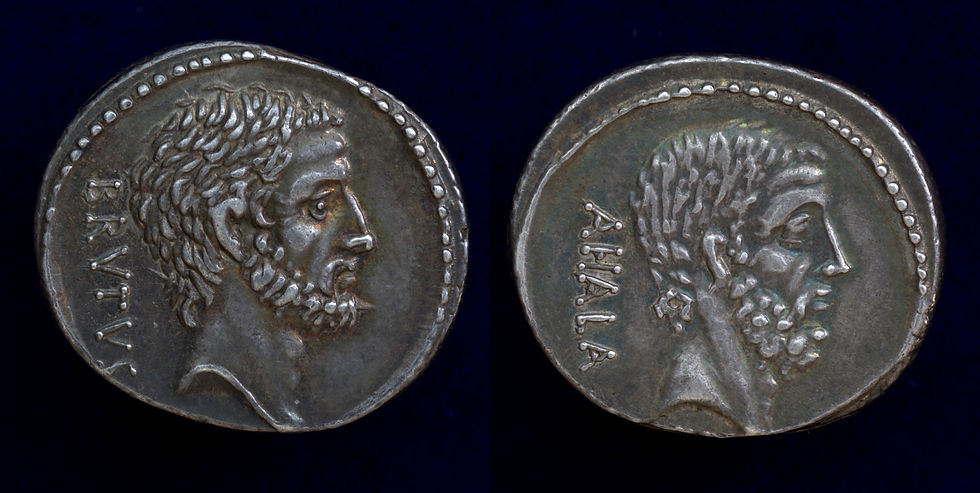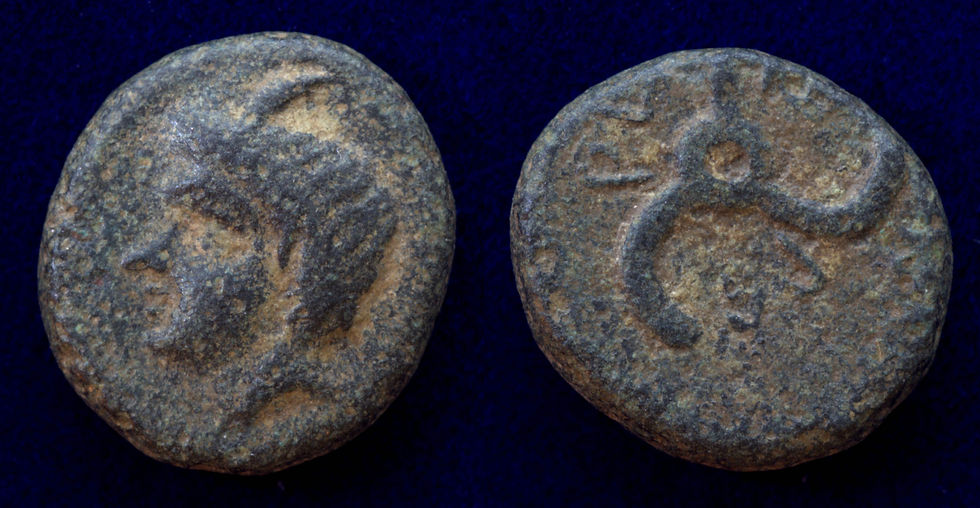Perikles, Lycian Dynast
- sulla80

- Aug 1, 2023
- 4 min read
Updated: Nov 5, 2023

A detail of a frieze from the Heroon of Perikle at Limyra circa 360 BCE. This "Heroon of Perikle" is the tomb of Perikle and declares his status as the first military king of Lycia. Photo by Vladimír Dlhý from Pinterest.
This ancient coin is attributed to Perikles, a Lycian dynast, who ruled c. 380-360 BC and provides a valuable glimpse into the historical and artistic heritage of the region. Perikles was a quasi-autonomous king of Lycia during the rule of the Achaemenid empire. Lycia, in Asia Minor, sat between Greece and Persia, and was caught up in an unsuccessful rebellion from Persian king Artaxerxes II by satraps (Persian governors) in western Anotolia in the 360s BCE.
It doesn't take long browsing the notes on this site to see that degree to which my interests have strayed from the coins of the 1st century Roman republic. For me the coins provide an anchor to explore ancient history and art and to learn the characters of both individuals and their societies.
My notes often return to the question, 'How do we know what we know?' This question leads to a dive deep into the varied and evolving perspectives presented by both contemporary and modern sources. This also leads to exploration of technical tools such as die links, hoard evidence, metal composition, overstrikes, and epigraphic evidence to unravel the stories behind these ancient relics.
My first ancient coin was from Imperial Rome. I wandered into a local coin shop that I passed each day on my walk to elementary school. Some coins that draw me in are well-preserved works of art, as this one from one of Julius Caesar's assassins, Brutus, telling of his tyrannicidal ancestry in 54 BC:

Roman Republican, M. Junius Brutus, 54 BC, AR denarius, Rome, struck 54 BC
Obv: Bearded and bare-headed head right of L. Junius Brutus; BRVTVS.
Rev: Bearded and bare-headed head right of Caius Servilius Ahala; AHALA
Size: 3.96g, 17-19mm
Ref: Crawford 433/2; Junia 30
More often, they are weathered by history and the environment, as with this coin:

Lycia, unknown mint, 380-360 BCE, 2.08g, 13mm, AE coin of Perikles (Päriklä), a Lycian dynast. Pan on the obverse and 𐊓𐊁 𐊕𐊆 𐊋𐊍 (Lycian script) on the reverse between arms of the triskeles.
A trilingual stele was discovered in 1973 writted in Lycian, Greek and Aramaic. It dates to the time when Lycia was under the influence of the Persian Achaemenid Empire. The stele added insight into the structure and vocabulary of the Lycian language.

Image from "The story of Greece : told to boys and girls" by Mary MacGregor, published in circa 1910.
Pan was known for his support of Athens over Persia in the "Battle of Marathon" in 490 BC during the first Persian , along with the story of Philippides the Greek hero who through some misattributions inspired the modern marathon.
The story from Herodotus writing in the second half of the 5th century BCE with Philippides, a long distance runner, sent from Athens to Sparta to ask for support against the Persians (this version written a few decades after the events, does not include a run from Marathon to Athens):
While still in the city, the generals first sent to Sparta the herald Philippides, an Athenian and a long-distance runner who made that his calling. As Philippides himself said when he brought the message to the Athenians, when he was in the Parthenian mountain above Tegea he encountered Pan. Pan called out Philippides' name and bade him ask the Athenians why they paid him no attention, though he was of goodwill to the Athenians, had often been of service to them, and would be in the future. The Athenians believed that these things were true, and when they became prosperous they established a sacred precinct of Pan beneath the Acropolis. Ever since that message they propitiate him with annual sacrifices and a torch-race. This Philippides was in Sparta on the day after leaving the city of Athens, that time when he was sent by the generals and said that Pan had appeared to him.
-Herodotus, The Histories, 105-106 Hundreds of years later Plutarch tells the story of a messenger with news of Athens' victory running from Marathon:
Again, the news of the battle of Marathon Thersippus of Eroeadae brought back, as Heracleides Ponticus relates; but most historians declare that it was Eucles who ran in full armour, hot from the battle, and, bursting in at the doors of the first men of the State, could only say, "Hail! we are victorious! and straightway expired. "
-Plutarch, De gloria Atheniensium, 347cand decades later, Lucian, tells another version of the story which integrates the story of Philippides and the victory run from Marathon:
Philippides, the one who acted as courier, is said to have used it first in our sense when he brought the news of victory from Marathon and addressed the magistrates in session when they were anxious how the battle had ended; “Joy to you, we’ve won,” he said, and there and then he died, breathing his last breath with that “Joy to you.”
-Lucian (2nd century AD), A Slip of the Tongue in Greeting
and Robert Browning's 1879 telling of the tale in poem:

Inspired by the poem, founders of the first modern Olympic games in Athens in 1896, created a ~25 mile race.
Given Pan supported Athens over the Persians, this seems a particularly defiant image choice for the obverse on this coin from the king of Lycia.
Reference (in addition to those linked above):
The sculpture of the Heroon of Perikle at Limyra: the making of a Lycian king, Tuna Sare, 2013, Anatolian Studies



Comments